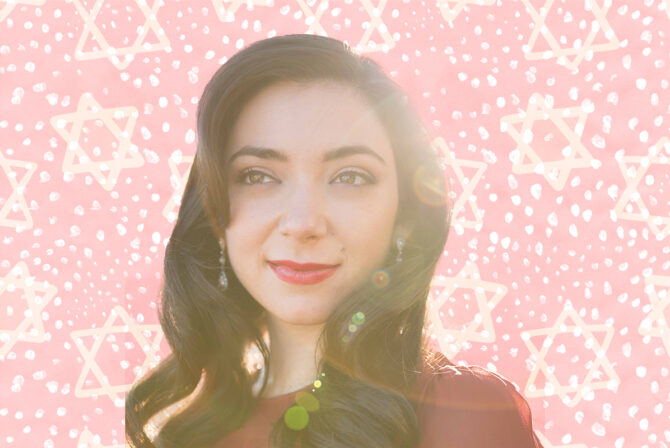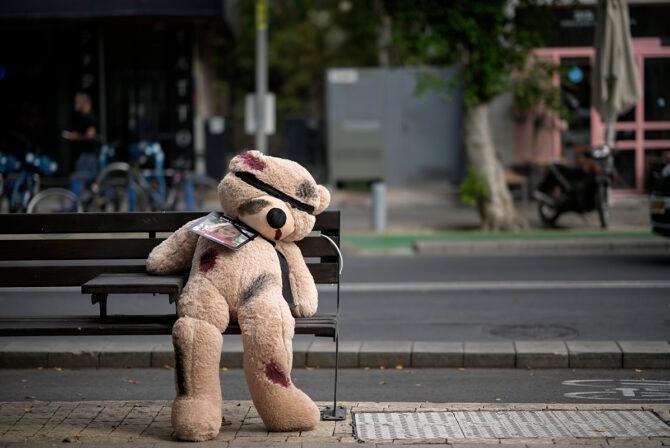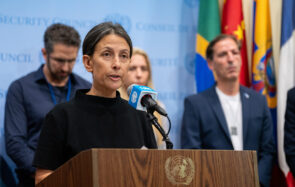It’s every parent’s worst nightmare. A stillborn, a premature infant who can’t make it, a baby born without a chance to live. No one ever talks about the possible complications of birth that can threaten the life of a baby. Not in childbirth classes. Not in the doctor’s office. Not in the excited conversation of expectant parents. So when the unimaginable happens and a baby dies at or shortly after birth, the parents, their families, and the community are totally unprepared.
One reason we are so shocked by a neonatal death is that medical technology to monitor pregnancy is so advanced. We know so much about the baby, even in utero, that the failure to prevent this loss seems nearly unbelievable.
It didn’t used to be that way at all. Until quite recently, the rate of neonatal death was quite high. In the Middle Ages, parents anticipated many pregnancies, fully aware that a high percentage of the babies would not survive. As sad as miscarriages and stillbirths were, the family and the community knew of the risks and expected a certain amount of loss.
The Traditional Jewish Response
The rabbis were aware of this as well. Although there are some dissenting opinions that allow mourning even a one-day-old newborn, the predominant position of Jewish law was that if a baby did not survive for 30 days, it was as if the baby had not lived. The two major Jewish legal statements on which this custom is based are these:
“We do not mourn for fetuses, and anything which does not live for 30 days, we do not mourn for it.” –Maimonides,Mishneh Torah,Laws of Mourning 1:6
“The infant, for 30 days, even including the full 30th day (if it dies), we do not mourn for it.” –Shulhan ArukhYoreh De’ah374:8
The reason for the limit of 30 days appears to derive from the fact that 30 days is the age at which we are commanded to redeem thefirstborn. For the rabbis, this marked the point at which a fetus became fully viable.
The result of this ruling was that none of the practices of mourning was to take place if the infant was born dead or did not survive to the 31st day. Although the child was buried, there was no funeral per se, the grave was left unmarked, and the parents might never know where the grave was located. It was undoubtedly considered an act of kindness to the parents and the community, for without the restriction, families would have been in mourning almost continuously.
The Contemporary Reality
Today the opposite is true. The tremendous sense of loss and the overwhelming need to grieve felt by the parents of an infant who dies before the 30-day benchmark does not go away just becausehalakhah(Jewish law) prevents the mourning rituals from taking place.
The medical profession has now recognized that parents experiencing a baby’s death must face the loss, and protocols to enable them to mourn have been developed within recent years. Parents are encouraged to see and touch the baby, pictures may be taken, mementos kept. It is recommended that the parents name the baby; it will be much easier in the future to talk about “Daniel” than “Baby Boy.” Social workers routinely recommend funerals, and support groups for bereaved parents experiencing neonatal death can be found in many communities.
Yet, most rabbis and most Jewish laypeople presented with this type of loss would be hard-pressed to know what to say, except to repeat the painful words, “There is no mourning for this child.”
Jewish law has remained viable and relevant because each generation of interpreters applied thehalakhahto its own time. The Committee on Jewish Law and Standards of the Conservative movement adopted a new position vis-a-vis neonatal death in 1992 by accepting the responsum (a rabbinic reply to a question of law) of Rabbi Stephanie Dickstein to the question, “What should be Jewish practice following the death of an infant who lives less than 31 days?”
Rabbi Dickstein points out that the commonly held belief that there is no mourning for a child who does not survive to 31 days is not the only position found in Jewish legal literature. In Mishnah Niddah 5:3, we find this statement: “A one-day-old infant, if he dies, is considered to his father and mother like a full bridegroom,” and therefore the child would be mourned. In the Babylonian Talmud, Tractate Shabbat 136a, we read that the sons of Rav Dimi and Rav Kahana mourned for their newborns who died.
Seven New Mourning Practices
Rabbi Dickstein has led the Conservative movement to establish new legal responses that carry with them the full authority of Jewish law. Here are the major points of this new practice:
1. Kaddish
In the case of a full-term pregnancy, when an infant dies for any reason, at any time after birth, its parents and other family members should be obligated for full bereavement practices, just as for any other child. The parents should recitekaddish(the mourners prayer) for 30 days and should observeyahrzeit(the anniversary of the death). Young siblings have no obligation to saykaddish, but older siblings should be encouraged to use the traditional rituals to work through the many feelings they have.
2. Burial
The body should be埋in accordance with Jewish practice. The funeral should follow standard practice with appropriate readings of comfort in place of a eulogy. Parents should be encouraged to attend the funeral, as should family and close friends. The funeral should be held as soon as possible, although if the mother wants to attend, burial may be delayed until she recovers enough physical strength following the delivery to attend.
3. Naming
If the infant was not named prior to death, it is usually given a name at the grave. The name may be the one the parents intended to use for their child, or they might choose a name likeMenachemorNechama, names that indicate a desire for “comfort.” There are two reasons for the naming: a) according to Jewish folk tradition, giving a name will enable parents to “find” their child in theWorld to Come; and b) psychologists consider the practice of naming to be an important help in healing the parents’ grief.
4. Autopsy
尽管验尸常常不能在犹太law, if the information gathered from an autopsy can help determine the advisability of future pregnancies for the couple or of treatment of diseases to which other children of the couple might be susceptible, it should be allowed, even encouraged.
5. Mourning
A completeshiva(seven-day mourning period) should be observed, beginning with the meal of consolation and including daily prayer services for the mourners. Communal participation in theshivamakes real this loss and overcomes the tremendous isolation the parents feel. If things had turned out differently, the community would have been there for visiting the baby and welcoming it with Jewish birth rituals. The family whose newborn dies should not be denied its community. It is also extremely important, especially for the father, to allow permission to do nothing else but mourn during theshiva时期。
6. Mothers and Fathers
The father and the mother should be treated equally as mourners. Both parents will react differently to the loss, [but] it is particularly important for the father to recognize his loss, for it is no less real than the mother’s. When the father is treated as a mourner, he is relieved of the burden of “being strong” for his wife. He has a specific set of ritual tasks to do that encourage him to confront the magnitude of his loss in all its dimensions.
7. Preemies
In the case of infants born prematurely, there is still debate within the Law Committee on how to define “viability.” Some, including Rabbi Dickstein, argue that between five months and 30 weeks the decision concerning mourning might be made by the local rabbi and the parents.
Certainly, there may be those who feel the centuries-old practice of not mourning a neonatal death could be more comforting than engaging in the whole ritual of Jewish bereavement. But for those who desperately need a vehicle for grief, this recent ruling allowing for the mourning of newborns is indeed a welcome development.
Reprinted with permission fromA Time to Mourn, A Time to Comfort(Jewish Lights).







